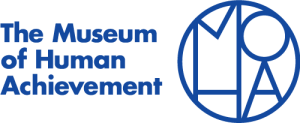3D Modeling & Photogrammetry
This is an artist page by Jesse Cline. This project was part of the 2023 CATS+ Computer Club cohort.
3D Modeling
3D Modeling is the process of building digital models of 3-dimensional objects utilizing a variety of methods and technologies. Models can be constructed from scratch using computer-aided design programs such as AutoCAD, Rhinoceros 3D, Maya, and Blender; alternatively, models can be rendered by 3D scanning a physical object. For CATS+ I wanted to provide an accessible introduction to 3D scanning and modeling using the photogrammetry app Qlone.
The most basic type of 3d model is a point cloud, which is just a series of points rendered in a 3 dimensional space; each point position has its own Cartesian coordinates (on the X, Y, and Z axes). Most point clouds are often turned into polygonal meshes through a process called surface reconstruction. 3D model files only contain geometric/structural information, and will need to be paired with a texture map file in order to render color and texture information.
File Formats
Standard Triangle Language - .STL
This is a standard mesh format that utilizes triangles. Only contains 3d information.
Wavefront .obj File - .OBJ
This file format defines texture map information and pairs with 3d models files like .STL
3D Scanning
Photogrammetry
Photogrammetry utilizes a 360 degree field of photos to stitch together a 3d model. By processing the 3d coordinates of the object/space, image coordinates of the object within the image file, exterior orientation of the camera, and the inner orientation of the geometric parameters of the imaging process, photogrammetry software is able to accurately stitch together image and orientation information and build a digital model.
Structured Light =
Structured light 3d-scanning uses a light projector and a camera to capture 3d information. Structured light projects a high-contrast linear pattern (black&white) onto the object while the camera documents the level of distortion the linear pattern exhibits. This distortion is processed and an accurate 3d model can be constructed.
Laser Scanning
Laser scanning utilizes a similar principle as Structured Light, but rather than measuring the distortion of a projected pattern, Laser Scanning projects a laser beam onto the object. Laser Scanning also commonly utilizes some photogrammetry to build texture map files.
LiDAR
Light Detection and Ranging is a form of long-range and geological laser scanning that sends a powerful laser into an object or surface and measures how long it takes for the laser to be reflected back.
Best Practices for Photogrammetry
Standard/neutral documentation environment is suggested: bright and even diffused light with no hard highlights and shadows, with an even background that contrasts with your object. Because most 3d scanning techniques involve some sort of light camera, materials and environments that alter the light behavior should be avoided (or embrace the glitch!!). Reflective/translucent/transparent materials reflect and refract light and will cause glitches in your mesh. Very symmetrical objects (geometric things like a deck of cards or a baseball) may also glitch because there are less obvious points of difference for the software to build an accurate model from.
Qlone Mat
We worked with Qlone, which i found to be the most robust and accessible 3d modeling app. Qlone has the option to utilize their Qlone Mat, which is a black and white checkerboard pattern you can print out and place your objects on while scanning. The checkerboard acts as a registration and allows for more accurate and faster scanning.
